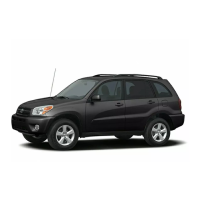558
8-2. Steps to take in an emergency
● If the vehicle does not drive straight
or you feel a pull through the steer-
ing wheel, stop the vehicle and
check the following.
• Tire condition. The tire may have
separated from the wheel.
• Tire inflation pressure. If the tire
inflation pressure is 130 kPa (1.3
kgf/cm
2
or bar, 19 psi) or less, the
tire may be severely damaged.
■ When performing an emergency
repair
● A tire should only be repaired with
the emergency tire puncture repair
kit if the damage is caused by a
sharp object such as nail or screw
passing through the tire tread.
Do not remove the sharp object
from the tire. Removing the object
may widen the opening and disen-
able emergency repair with the
repair kit.
● The repair kit is not waterproof.
Make sure that the repair kit is not
exposed to water, such as when it
is being used in the rain.
● Do not put the repair kit directly
onto dusty ground such as sand at
the side of the road. If the repair kit
vacuums up dust etc., a malfunc-
tion may occur.
● Make sure to stand the kit with the
bottle vertical. The kit cannot work
properly if it is laid on its side.
■ Precautions for the emergency
tire puncture repair kit
● The repair kit power source should
be 12 V DC suitable for vehicle use.
Do not connect the repair kit to any
other source.
● If fuel splatters on the repair kit, the
repair kit may deteriorate. Take
care not to allow fuel to contact it.
● Place the repair kit in a storage to
prevent it from being exposed to dirt
or water.
● Store the repair kit in the luggage
compartment out of reach of chil-
dren.
● Do not disassemble or modify the
repair kit. Do not subject parts such
as the air pressure indicator to
impacts. This may cause a mal-
function.
■ To avoid damage to the tire pres-
sure warning valves and trans-
mitters
When a tire is repaired with liquid
sealants, the tire pressure warning
valve and transmitter may not operate
properly. If a liquid sealant is used,
contact any authorized Toyota retailer
or Toyota authorized repairer, or any
reliable repairer or other qualified ser-
vice shop as soon as possible. After
use of liquid sealant, make sure to
replace the tire pressure warning
valve and transmitter when repairing
or replacing the tire. (P.488)

